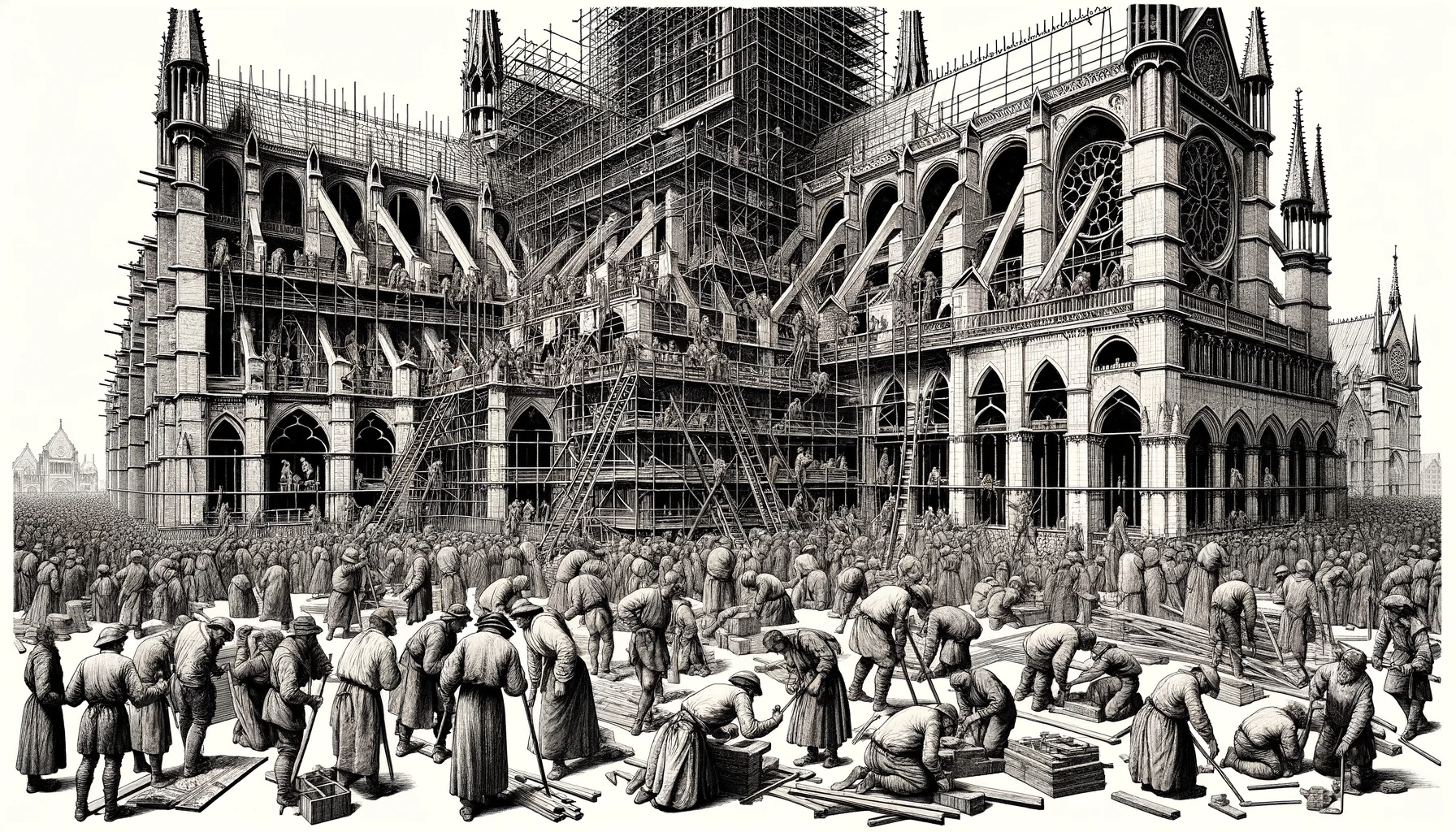The Insider - December 2023
On the intelligence of care, the pursuit of the tangible, the future of American cities, carbon credits, and cathedral building.

Hi everyone,
Welcome to the December edition of the Insider. Do you know someone who would enjoy the Insider? Forward this email to them and they can subscribe here.
The intelligence of care
One of my takeaways from reading Walter Isaacson’s biography on Elon Musk was that Elon was singular in how much he cared about his products. He was obsessed, in a way that was unrivaled by anyone else on the teams at SpaceX and Tesla. This obsession became an unhealthy fanaticism and brand of micromanagement that could burn the people around him, but it also seems like it was the source of his genius. He gave a damn more than anyone else, and that deep care spurred him to challenge fundamental assumptions and solve problems others thought were impossible. Elon is a complicated figure, but throughout the year, I kept coming back to the idea that where there is deep care, there is profound intelligence. We can choose to think of intelligence as something that is inborn and fixed, or even as something that is constant across topic and time, but I wonder if it’s valuable to reimagine our intelligence as something that is interwoven with our care and attention, a byproduct of our curiosity. We can summon our own latent genius when we focus on where we care the most.
On the pursuit of the tangible
The world’s physical architecture—its buildings, rooms, and public spaces—has always been a reflection of and response to the society and culture of the time. The same is true with how we design our lives, which is why I’ve been reflecting on this question: how is the architecture of my life a response to the architecture of modern society? In 2023 I found myself subscribing to physical magazines full of essays and photographs—ones that would arrive at our house, through our mailbox, and onto our dining room floor with a thud. The feel of the paper, the look of the black ink, the sound of a crisp page represented an almost subversive act. The relentless pace and fleeting nature of content online make the whole experience of absorbing digital content feel less spacious, more hurried, vulnerable at any moment to an unwanted distraction or impulse. I’m noticing that I’m architecting a life defined increasingly by tangible and physical experiences because so much of a life spent on devices and screens is defined by intangible, ephemeral ones.
The future of American cities
We are at the dawn of the next generation of the American city. The commercial real estate crisis that’s taken hold in 2023—and one that will deepen in 2024—will become the fertile soil for American cities to reinvent themselves. From remote work decimating occupancy rates in office buildings to unaffordable housing forcing long commutes to a looming debt crisis at regional banks, the upheaval in downtown districts across the country will eventually force cities to become more livable and resilient. This will not happen quickly, nor will it be inevitable. It will require extraordinary public-private partnerships and courageous politics at the municipal level to build cities that thrive.
There has never been a time when there’s been more choice about where to work, where to play, how to consume entertainment, and how to connect with family and friends than there is today. When it’s easier than ever to be anywhere and everywhere, it’s harder than ever to make any one place extraordinary. The cities and towns that hold themselves to this standard will become the templates for the future of American urban life.
On carbon credits
Ten years ago, the University of California system, comprising ten campuses and three national labs, pledged to become carbon neutral by 2025. This year, they’ve decided to push off their carbon neutral date by 20 years, to 2045. The reason? Their own research found systemic problems with the quality of carbon credits and carbon markets. To become carbon neutral, the university would have had to offset 50% of their emissions with carbon credits, costing between $20-30M annually. But was it worth it if the carbon credits were of dubious quality and carbon neutrality was more a PR concept than a climate reality? Instead, the university decided they would do the longer and harder work of prioritizing cutting emissions themselves.
In the urgency to tackle climate change, the pendulum has swung into financialized pseudo-solutions that appear sophisticated, but are actually not climate solutions. It’s worth girding ourselves that the work of addressing climate change will be longer and harder than we originally thought. There is no promise it will move forward linearly. We should be far more concerned with less emissions in the long-term than net zero proclamations in the short-term, and far more interested in boring, enduring fixes than flashy quick ones. We need to become comfortable with a reality where we can’t easily declare victory, but we’re still making progress.
On cathedral building
When I find myself seeking the dopamine-hit of a short-term achievement or intoxicated by the sense of productivity from a tightly-scheduled life, I sometimes think of the cathedral builders of the middle ages who never saw the ultimate fruits of their labor. Paris’s Notre Dame cathedral took over seven generations—182 years—to complete. Centuries after Notre Dame was finished, Victor Hugo declared it “a symphony in stone.” But for so many, and for so long, it was no symphony; it was just an unfinished construction site. I think I would have struggled to be a dutiful cathedral builder. I’m too enchanted with the flavor of impact and results that is quickly observable and attributable. But there’s value in finding our modern day cathedrals: the projects that are so ambitious and long that they have the power to change us. To apprentice in the art of cathedral building is to decenter the self, to fall in love with the process, and to loosen our fixation on the narrow band of results that is instantly observable. It is to have faith in something we may never see.
~~~
Can you help?
What are the best newsletters you subscribe to? What do you make time to read because it's head-and-shoulders better than everything else that hits your inbox? I'd love to hear from you.
Can I help?
At a time when AI is generating more content than ever and most newsletters are decidedly average and quickly delete-able, a newsletter that holds your attention is rare. I hold myself to a high standard of writing emails worth reading, and in addition to the Insider, I write for a few organizations as an outsourced newsletter writer. If your organization is looking to stand out in the inbox with a newsletter that’s worth opening, reading, and sharing, I’d love to help as either an advisor or writer.
What I am reading
- How the New York Times lost its way. This is an article on the slow devolution into illiberalism and what happens when the media doesn’t trust its readers. The Economist.
- How millennials learned to dread motherhood. When happiness becomes interpreted as privilege, and privilege is used as a political tool, we develop a warped understanding of everything, including what it means to be a parent. Vox.
- How the Epic/Ikon corporate duopoly has ruined skiing. The season pass has changed how we ski. Slate. Pair with an article in High Country News on the housing crisis in mountain towns.
- How carbon credits create a land grab in developing nations. The allure of carbon credits is enticing poor countries with the promise of profits. The Financial Times.
Something personal
Sometimes, when I come home from work and the timing is just right, when the sound of my key searching for the lock makes enough of a noise, through our front door I will see Emma, our dog, rise from her nap and come bounding my way, the entire back half of her body wagging in excitement. And then, not far behind will be Lisa with arms outstretched, a wide smile breaking across her face. In that half-second before the door opens, I have found myself thinking, if I have this, I have everything.
~~~
Happy new year!
Banks
